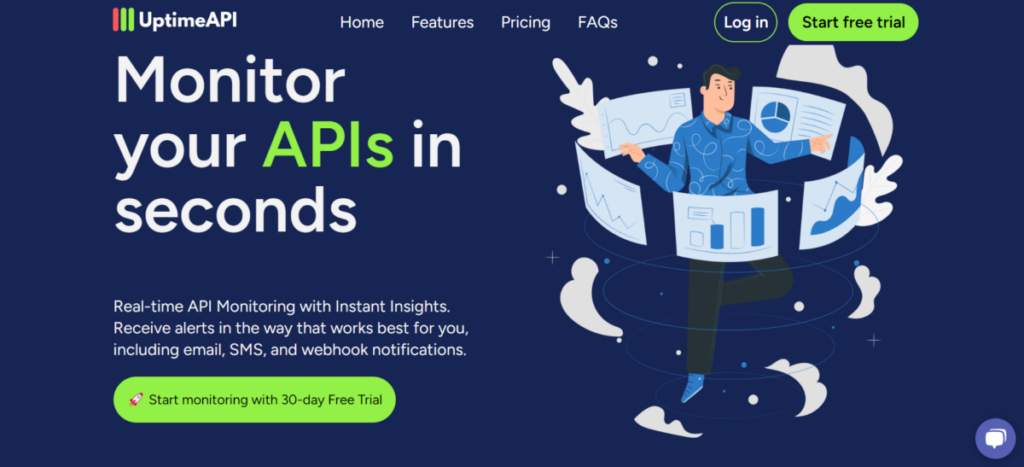Maintaining optimal API performance and preventing issues before they arise can be challenging. This is where API Monitoring Tools come in. These tools provide real-time insights into API performance, helping developers detect and fix problems instantly, ensuring uptime, and improving user experience. Without reliable monitoring, APIs can suffer from unexpected downtimes, performance lags, or security vulnerabilities, impacting both developers and end-users.
What Are API Monitoring Tools?
API Monitoring Tools are specialized software solutions that track and analyze the performance of APIs in real-time. These tools allow developers to monitor uptime, response times, latency, and various other performance metrics. When any irregularity or failure is detected, such as a slower-than-expected response time or a security breach, these tools notify developers immediately. This proactive approach allows for quick intervention, minimizing the impact of any disruptions. With the ability to monitor APIs continuously, these tools help ensure that applications remain functional, secure, and efficient, contributing to the overall stability of digital services.
Top 3 API Monitoring Tools
Uptime API is a cutting-edge tool designed for developers seeking real-time API performance insights. It excels in delivering instant alerts on downtimes, response time irregularities, and other critical metrics. Uptime API provides a highly customizable dashboard where users can track their APIs and set thresholds for automated notifications. Its powerful API monitoring infrastructure helps developers prevent unexpected downtimes by offering 24/7 surveillance of API services. This tool’s user-friendly interface and comprehensive monitoring features make it ideal for developers who want to stay ahead of potential issues before they affect users.
Postman is widely known as a comprehensive API development platform, but it also offers robust API monitoring features. Developers can use Postman to create and run monitoring requests at scheduled intervals, enabling continuous checks on API health. Postman allows users to automate test scripts, which can identify performance bottlenecks and ensure API endpoints behave as expected. In addition to monitoring, Postman provides analytics that offer detailed insights into response times and error rates, helping teams diagnose issues quickly. With its powerful collaboration features and deep monitoring capabilities, Postman is a preferred choice for teams working on complex API-driven projects.
Catchpoint offers an advanced API monitoring solution aimed at businesses and developers who require deep visibility into API performance across different environments. What sets Catchpoint apart is its ability to monitor API endpoints globally, giving developers insights into how their APIs perform in various geographic locations. This tool tracks critical metrics such as response time, latency, and error rates, and offers real-time dashboards to visualize performance data. Catchpoint also integrates with other tools in the development ecosystem, allowing for seamless workflows. Its focus on scalability and in-depth analytics makes it ideal for enterprise-level API monitoring needs.
Conclusion
API Monitoring Tools play a vital role in maintaining the health and performance of APIs, which are the backbone of modern applications. By offering real-time insights, instant alerts, and comprehensive performance metrics, these tools ensure that developers can keep their systems running smoothly and resolve issues before they escalate. Whether you’re using Uptime API for instant notifications, Postman for automated tests, or Catchpoint for global monitoring, each tool provides unique features that cater to different needs.




